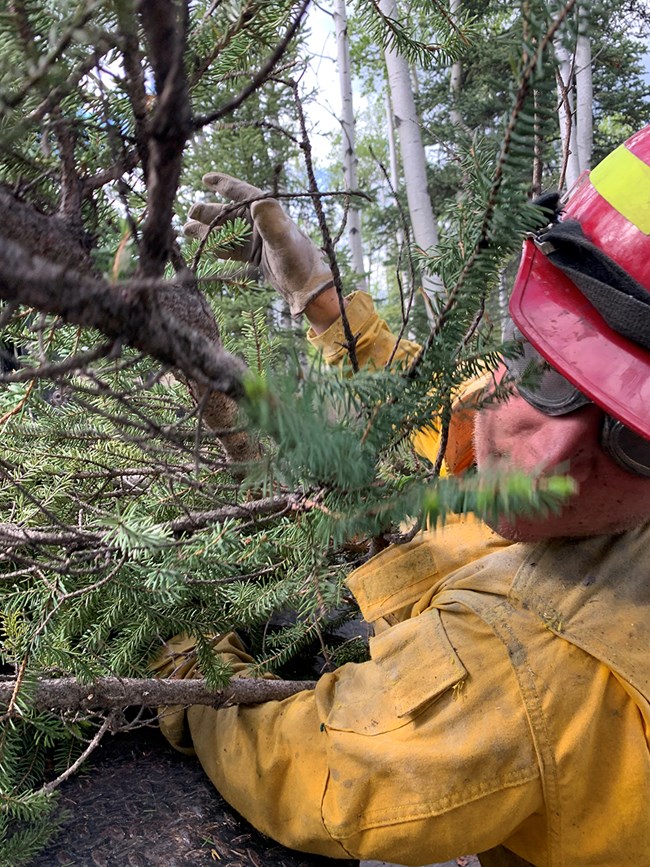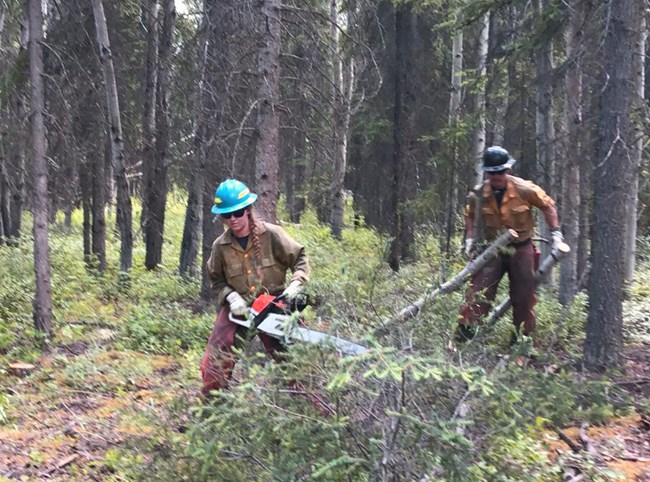Last updated: February 3, 2021
Article
East Meets West: Active Fuels Management Collaboration in Wrangell-St. Elias
Each year, an average of 460 fires burn nearly one million acres in Alaska. While fire is a natural part of the boreal forest, protecting infrastructure and valued fire sensitive resources is an important part of the National Park Service (NPS) fire program.

NPS

NPS
The crews faced additional challenges this season to follow COVID-19 mitigation methods. The two crews camped separately, drove assigned vehicles, and kept their camps and equipment sanitized. A perk after a long day of hard work was getting to enjoy fresh Copper River salmon while camping along the Gulkana River. All in all, when East met West… it turned out be a fun, productive project, and crew members gained great chainsaw experience through the mentorship of their leaders and fellow crew members.

NPS

NPS
